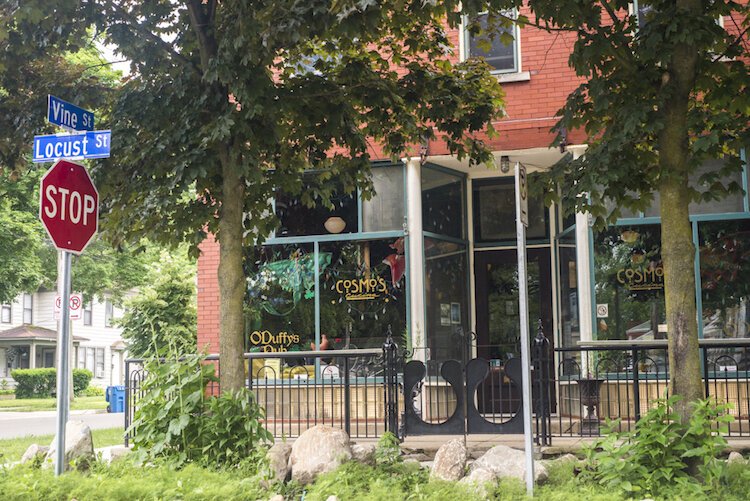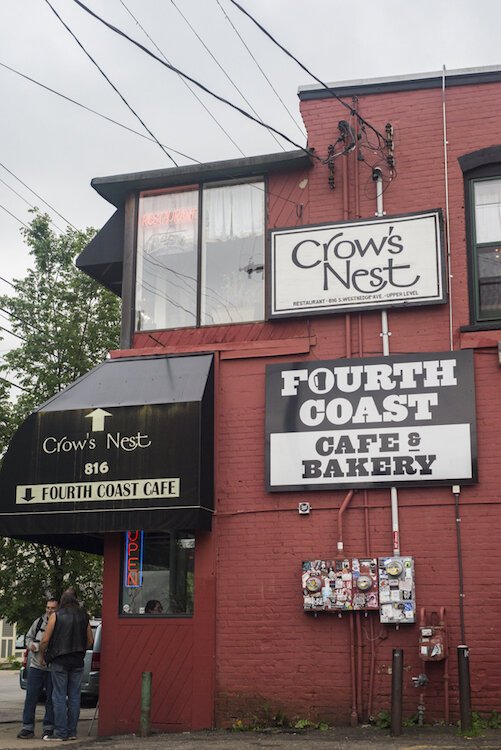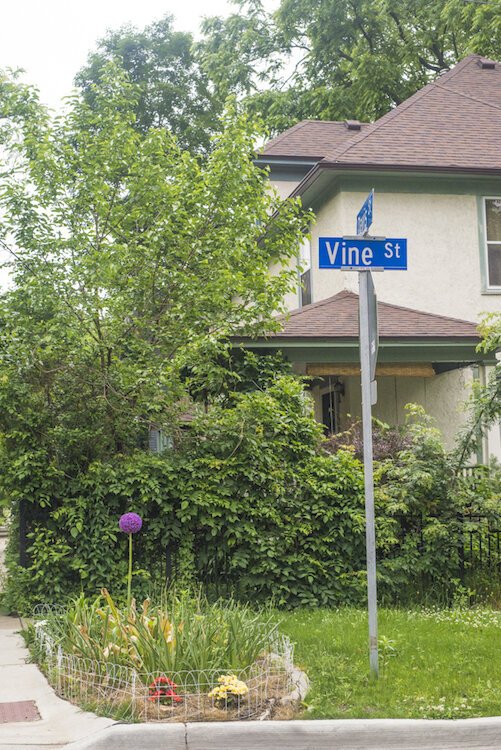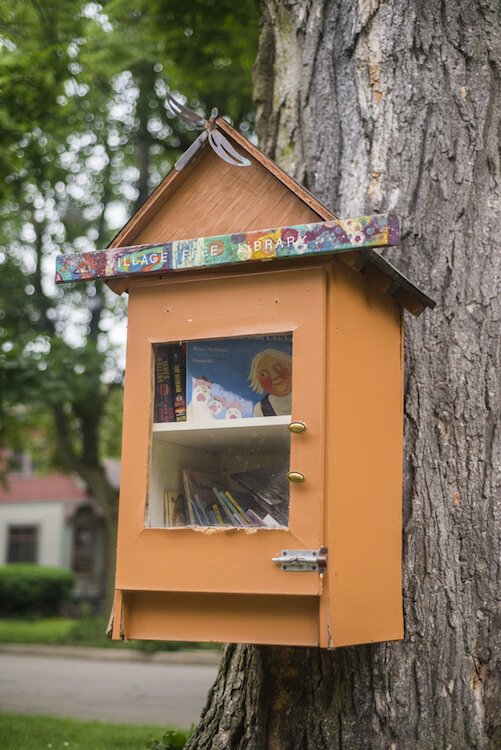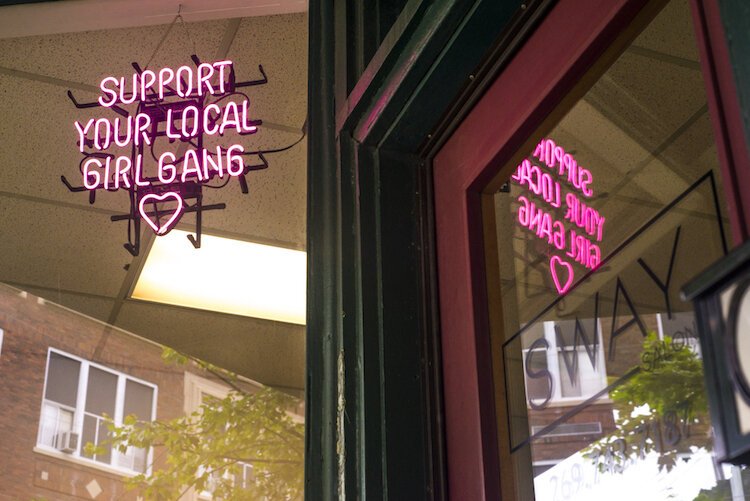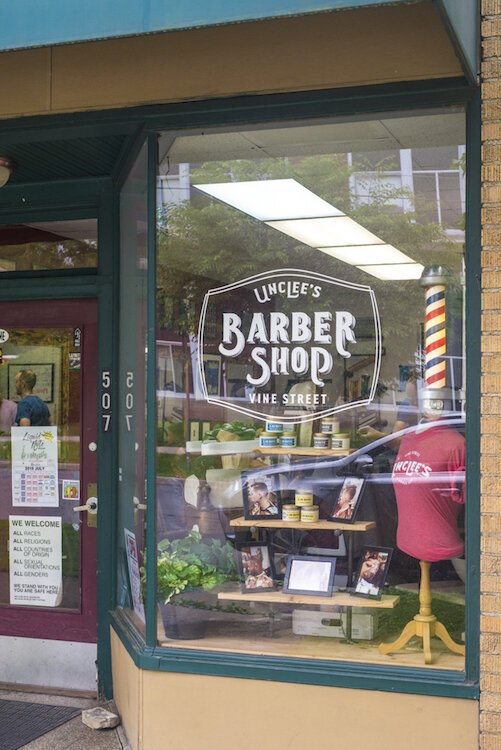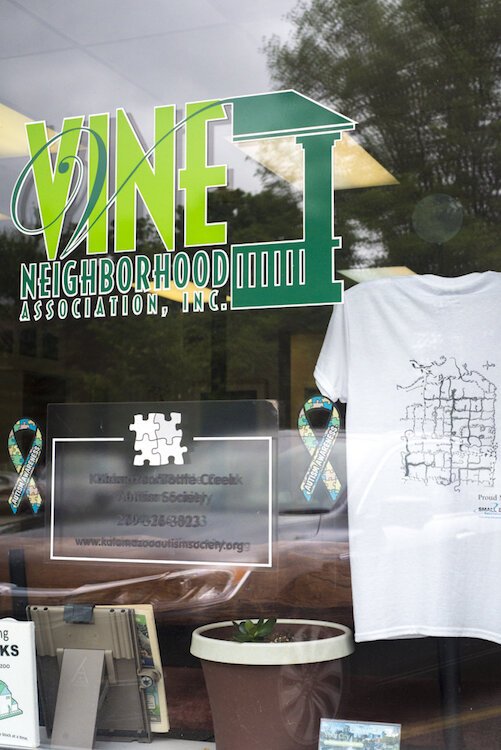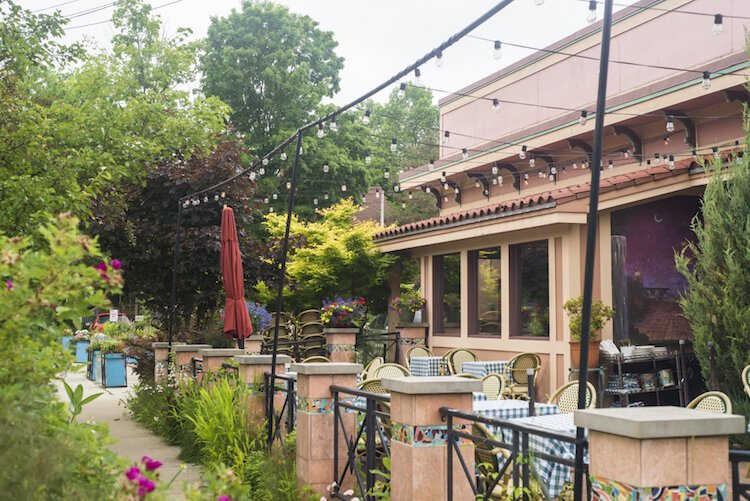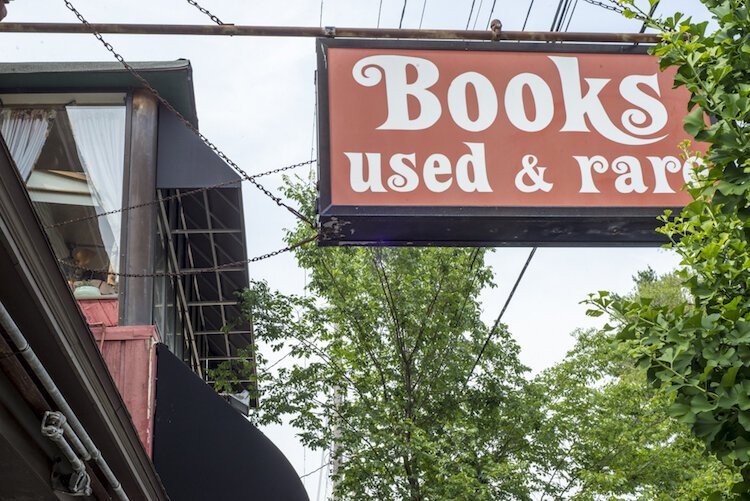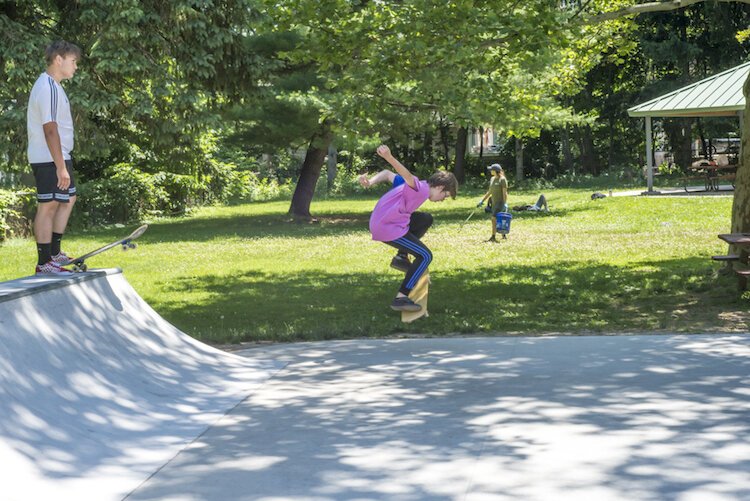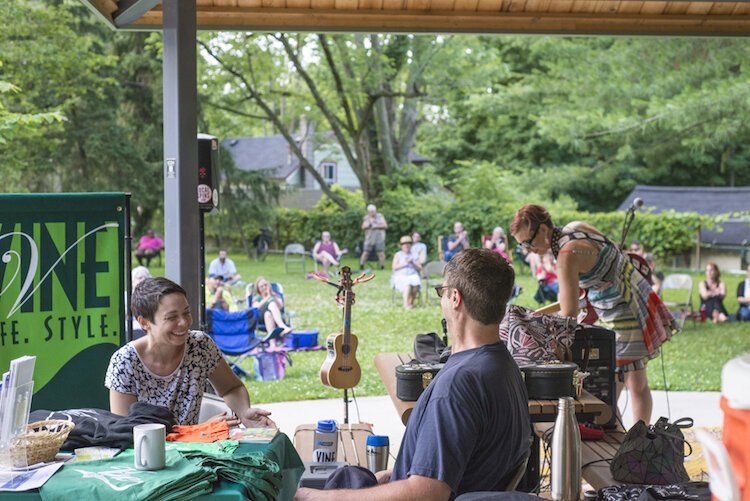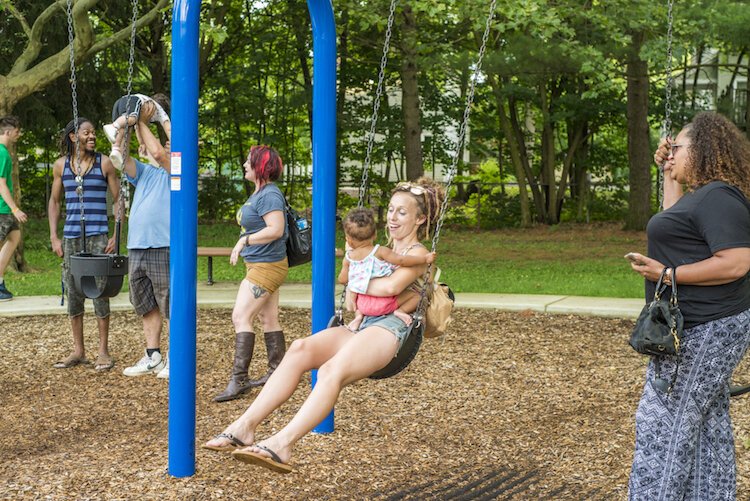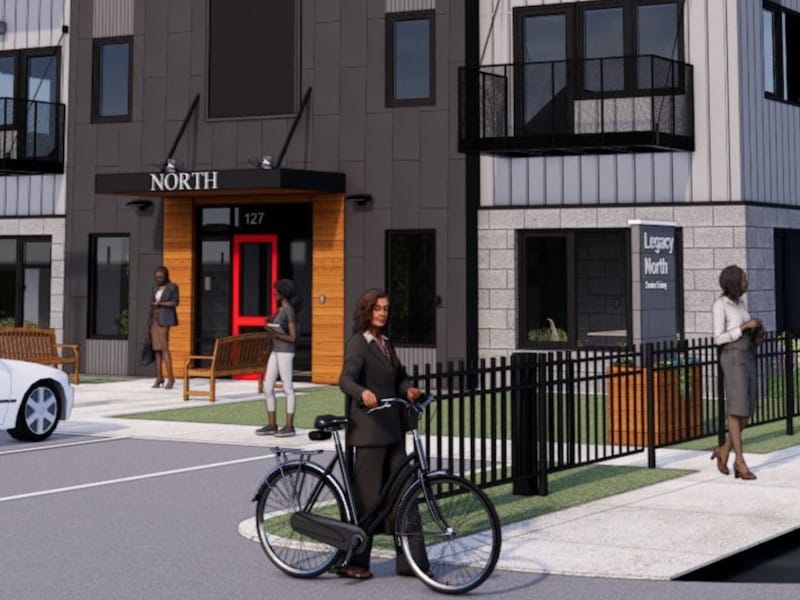Kalamazoo’s Vine: A haven for families, students, retirees, Millennials, and nicknames
If you think you know the Vine Neighborhood in Kalamazoo check here to see if your impressions are up to date.
Editor’s note: This story is part of Southwest Michigan Second Wave’s On the Ground Vine Neighborhood series.
Vine by any other name would still be Vine, but this hip historical neighborhood has a way of gathering nicknames, especially by those who know and love it.
Take an old and mostly outgrown one, the Student Ghetto (or Party Central). Historically, before the Western Normal School had dorms, students lived in boarding houses off Oakland and behind East Campus. Over the years, Vine’s student population grew, and after the advent of Western Michigan University’s dorms, the neighborhood became a sanctuary for those who wished to live away from the university’s watchful eyes.
Then there are the names residents who are trying to describe it use: Little Portland, Neverland, Oasis for Oddballs, Land of Alleys, Courts, and Places, and finally, The Vine, article added to emphasize its singularity as a community that welcomes people who value singularity.
What Vine is not is a cookie cutter neighborhood, even by urban standards. The rare, historical houses (some dating back to the 1850s) are filled with a mixture of people that include students, intentional cohabitors, families, singles, working poor, middle class, retirees, and everything in between. And the neighborhood also boasts many of the city’s most popular entertainment landmarks, such as the State Theatre and Chenery Auditorium.
The mural-bedecked businesses on Central Corners, the four parks, including the Davis Street Skateboard Park, coffee shops, restaurants and breweries, several churches, El Sol Elementary School, a Spanish immersion magnet school, the Kalamazoo Math and Science Center, a vibrant underground music scene, and block parties galore all make Vine an inviting, diverse, and colorful place to live.
Neighborhood Executive Director Steve Walsh says he doesn’t care what the neighborhood is called, as long as the name is spoken with affection. “Are you using it as a form of endearment or are you using it to diminish the place?” says Walsh. “If you are using it to lift us up, then I can get behind it.”
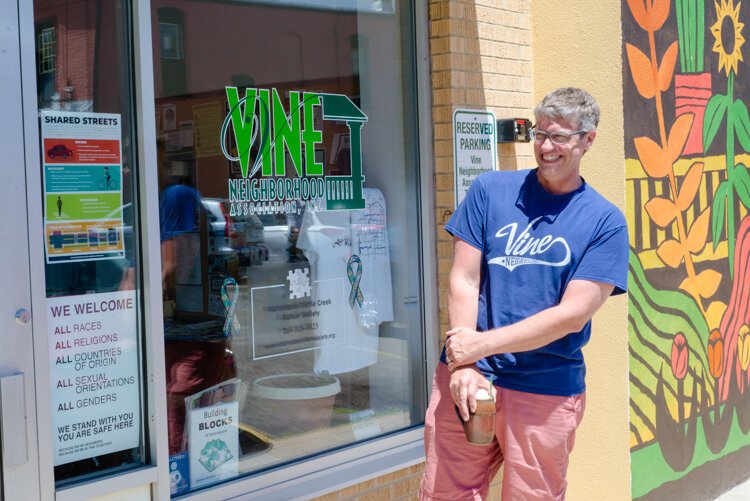
Vine’s tendrils around the city
South of Downtown, east of Western Michigan University and west of Bronson Methodist Hospital, the nearly one square mile historical Vine Neighborhood is home to almost 6,000 residents, according to the 2016 United States Census, with over half of those between the ages 18 and 30 and including 1,000 more males than females.
Its boundaries are West Lovell to the north, Oakland to the west, Howard to the south, and Crosstown and Burdick to the east.
As Walsh acknowledges, there is a wide affection for the neighborhood, because many have an affiliation to it whether they lived here when students, attended some institutions, such as the Kalamazoo Area Math and Science Center or Kalamazoo Junior Symphony, which rehearses at Chenery Auditorium, or have favorite restaurants (Martini’s, Cosmo’s Cucina or Crow’s Nest, to name a few), coffee shops or pubs (O’Duffy’s downstairs from Cosmo’s).
“Are there any other restaurants besides Martini’s that are full all the time and don’t have a sign out front?” asks Sharon Ferraro, the city’s historic preservationist coordinator. Ferraro, who grew up in Vine and has lived there for 60 years, says the neighborhood is “constantly changing.” Her father, photographer Lance Ferraro, 96, still lives in the house where Sharon was raised.
Ferraro likes that the houses are close to the street. “People sitting on their porches are almost a part of the sidewalk scene,” says Ferraro. “An interaction can go on there. One of my dad’s favorite things to do is just sit out on the porch swing and watch people go by.” In fact, Lance Ferraro can be seen on a Google Earth photo swinging on that very porch.
For an urban neighborhood, Vine, a designated historic district, is unique in that it’s still relatively affordable for renters if not for buyers, though listed houses are selling briskly.
“People still think they can come into the neighborhood and buy a house for $8,000,” says Walsh. “That ship has sailed.”
Like other neighborhoods in the urban core (Edison, Eastside and Northside), affordable housing remains an issue as identified by Vine’s Imagine Kalamazoo 2025 neighborhood plan. Right now, the average 2017 Vine resident median income was $22,359, which was $10,000 less than the city median, though the level of education in Vine residents is high, exceeding not only city, but also state averages. Most rents, however, still exceed the 30 percent of income ratio, a standard typically used to measure affordable housing.
The neighborhood attracts artists and activists, post-graduates and younger families looking for an older, walkable city neighborhood.
“If you’re kind of a progressive person from Dowagiac or Decatur, you often end up here,” says Walsh.
Over the 17 years since Walsh and his wife moved to Vine where they are now raising two children, Walsh has seen a shift towards families and away from students.
“When I moved here, people walked pit bulls with chains around their necks,” says Walsh. “Now people walk these little dogs. The perception around the neighborhood has changed. I can bring a nice, friendly dog. And the pit bulls are nicer, too.”
When he first became VNA director, Walsh says he had to overcome a prevailing neighborhood attitude that “if only the students would leave, we’d get the type of neighborhood we deserve.”
While student population has decreased, in large part due to the lure of newer apartments with amenities for the same price (around $300 a room), which “poached some of our party folks,” the ones who have remained have become more involved in the neighborhood. Walsh says he asked himself, “Is there a way we can kick open the doors here for students?”
Outdoor concerts, like a recent July 5 gathering at Davis Park, and the building of the city’s first neighborhood skateboard park last August, are efforts in that direction.
“The energy and verve that younger folks often bring can permeate the neighborhood,” says Walsh. “Also, in terms of economics, they are the ones who can buy a $4 mocha.”
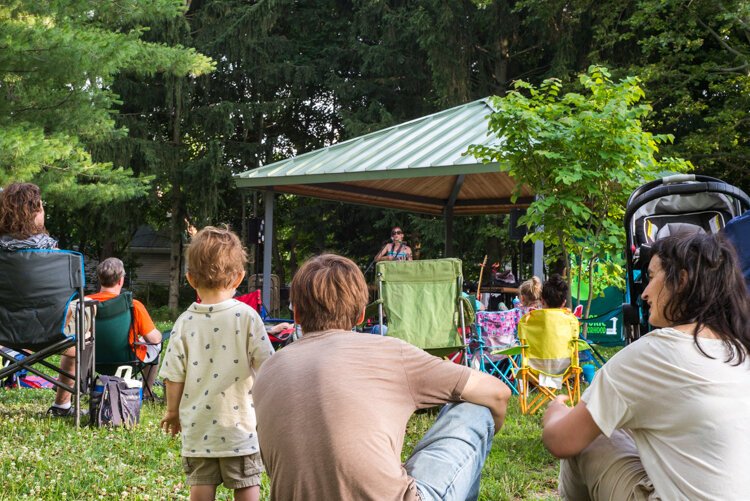
Oasis for oddballs and others
Sarah Ruggles, current board chair of the Vine Neighborhood Association, was introduced to Vine through some friends when she was a student at WMU. “We would come hang out at their place and I would think, this is so much cooler than where I lived,” says Ruggles, who lived then in an apartment complex off Drake Road. “There’s such a community here and everyone is plugged into each other.”
Ruggles exemplifies a type of Vine resident who fell in love with the neighborhood as a young adult and then decided to make Vine a more permanent home. “I came to Vine as a student and now I am in the grown-up, owner-occupied resident category and investing in my neighborhood by serving on the association board,” says Ruggles. “I really feel a sense of belonging and mutual investment. The neighborhood brings a lot of good things into my life.”
As a lower-income neighborhood, Vine has what Ruggles terms a “complicated identity” as it is also highly-educated and majority white. Many Vine residents are artists, activists, craftspeople and entrepreneurs who also work in education and the service sector, such as in downtown restaurants.
“I identified Vine as kind of an oasis for the oddballs among us,” says Ruggles. “We somehow gravitate here and find a lot of community together.”
Underground and aboveground, arts galore
As the student population has decreased, the neighborhood, always inviting to those who work downtown, particularly in the service sector, has seen an increase in cooperative housing, with young adults now sharing space. Over 60 percent of the neighborhood is between the ages of 20 and 35.
Andy Argo, who has lived in Vine since 2011, is one such adult. Having grown up in Edison, Argo says he was attracted to the neighborhood because of the art and underground music scene, which was ranked six years ago as the sixth in a national listing of underground music communities.
“The part of Vine I really experience the most is this core of working-class artists,” says Argo. “By day, they run a custodial service. By night, they perform at two different places or are getting art installations put up.”
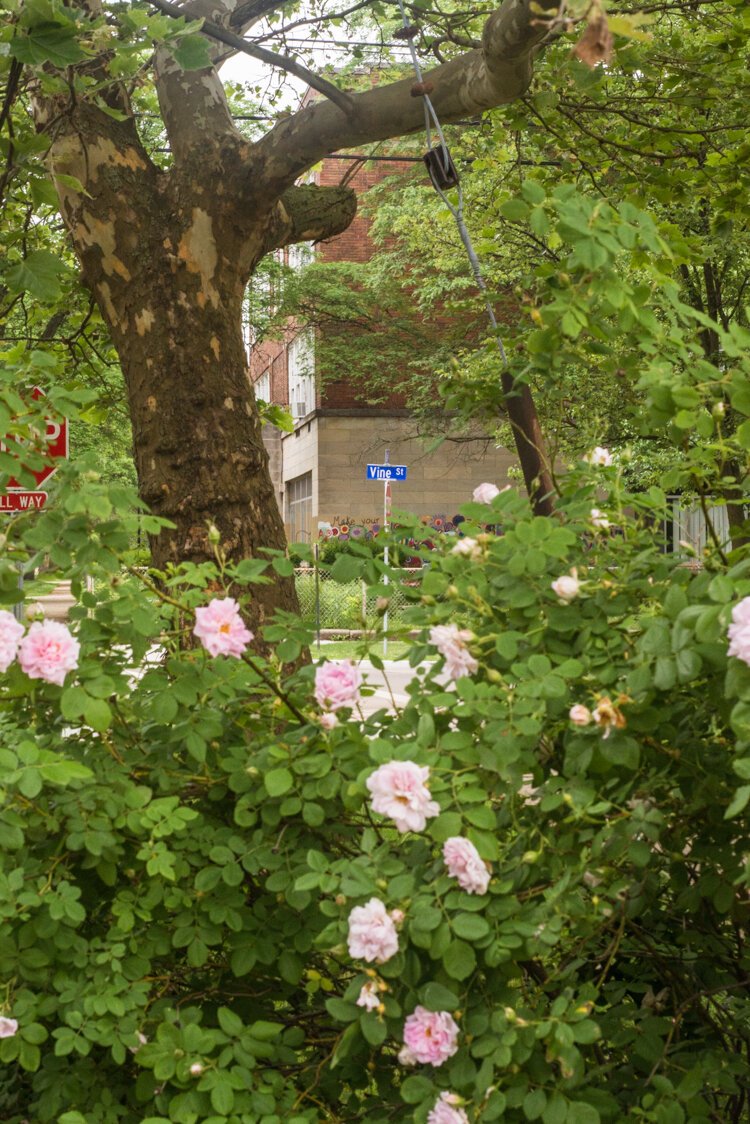
Argo rents instead of owns. “It’s very hard to get the capital to own and it’s become increasingly difficult to buy in,” says Argo. “I cohabitate and have done so since I moved in. That cooperative culture is really engrained here with four or five different people living in a house, making it their home or sharing it as an artspace.”
Walsh calls the underground music scene as “one of the real assets of the neighborhood.”
Not everyone is a fan, though they may tolerate it. Philip Marsceau, for instance, who owns several homes in Vine and lives in one while renting out the others, didn’t anticipate the level of noise from student parties, and later house bands, when he moved from the Stuart Historic District several years ago.
Still, he says he appreciates the strong sense of community in his neighborhood. “There are many interesting and wonderful people here,” says Marsceau, who is devoted to preserving the historic homes he owns. “There’s a sense of community, of permanence, that’s lacking in brand new neighborhoods.”
For Emily Greenman Wright, a third-generation Vine resident who now lives with her husband, Shaun Wright, and their two children, Edith, 8, and Theodore, 6, on the neighborhood’s south side, growing up in Vine in the ’80s, was a rich and complex experience.
“There’s the best of everything and the worst in one place. It is the Portland of Kalamazoo,” says Greenman Wright, whose mother still lives in the house where Emily was raised. “And I’m all about keeping Vine weird. It always has been.”
Vine on the rise
With the Kalamazoo Promise, the Foundation for Excellence, and housing market upswing, city neighborhoods are primed for growth. For Vine in particular, the VNA’s purchase of Central Corners, the renovation of neighborhood parks, and the increase in owner-occupied housing, the community is poised to fulfill dreams identified by residents in its neighborhood plan.
Last year, Midtown Fresh Market opened and though not in the neighborhood it is close enough to the border to bring the neighborhood “out of the food desert, but nowhere close to the food oasis,” says Ruggles. Vine is also the only urban core neighborhood to boast its own laundromat, Ye Olde Laundry.
Issues with slumlords still exist, as many properties have been purchased by owners who live out of state and may have never have set foot in the city, let alone on their rental property.
After losing population in the crack epidemic in the ’80s and during the most recent recession, most residents agree that Vine is currently on the upswing. Vine has changed with the times, reinventing itself, not from the outside in, but from the inside out, as the needs arise.
Crime still exists, but is on the wane. “This is great City Living 101,” says Walsh of learning to live safely in an urban neighborhood. “You put your head on a swivel. You make it look like there is someone easier to pick on than yourself. And smile. Smiles are great, too. Then you can negotiate New York, Boston, Chicago, anywhere.”
Ruggles is hopeful about where she sees Vine headed with its resident diversity, not just in age, gender or sexual orientation, but also in race and ethnicity, which has increased since the 2016 census. According to a 2018 Michigan State University Existing Conditions Report, Vine residents now comprise 17 percent African American, 7 percent Hispanic and 73 percent white. Ruggles would like to see more diverse racial representation on the VNA board.
“Across the country, you’re seeing a shift with people moving back into urban centers,” says Ruggles. “Vine really has this flair for the eccentric and the artistic that is a big part of our identity.
“We are a neighborhood that is arguably the most central urban neighborhood in Kalamazoo, How will that impact us? This puts us into people’s line of vision in terms of giving us a little extra voice with the city as they recognize we are going to become increasingly vital to the near future of Kalamazoo. It gives us some recognition and puts us on the map.”
“The pendulum is swinging back,” says Walsh. “We have never been better resourced or had better people in place than we do right now.
“These are neither the best of times nor the worst of times,” says Walsh. “This is the time right now. And it’s pretty exciting.”

